Manufactured indoor and outdoor stone veneer, systems and guarantees: optimising materials and thoroughly testing their compatibility is part of our daily commitment. Improving the quality of property in static, energy, wellbeing and safety terms has become not just a legislative requirement, but also an irrevocable requirement for the future of the planet.
LEPIR II FIRE SAFETY TEST

2018 | France | Murogeopietra® on EPS meets criteria for non-propagation of a flame front beyond the next floor. The procedure passed the LEPIR II test, which regulates the spread of fire outside facades for regulated buildings (residential buildings, buildings open to the public and skyscrapers).
After the test, during the visual inspection, the stone cladding was difficult to remove from the left window jamb and architrave, where a crack was caused by the thermal shock. There you can note that in the absence of the panel of rock wool, where the underlying EPS insulation sublimed, but the guaranteed solution (Technical Manual section 6.21) contributed to keep the layers of adhesive, mesh and stone perfectly anchored to the base, thanks to the wall plugs.
Quakeproof Tests

2023 | France | CSTB structural and fire safety section
Mechanical design and testing. Perpendicular seismic excitation.
The report shows the results of a seismic excitation test perpendicular to the substrate plane for an ETICS process (Mastrosistema® process) Avis Technique 7/22-1788_V1. The applied stresses are those of conventional scanning. The model undergoes 8 successive phases. For each phase, 3 sequences of 20 cycles are performed, in ascending order of frequencies with the amplitudes indicated above. At the end of each phase, a pause is made to record the tested observations. The test is interrupted as soon as an element is found to have fallen or at the end of the eighth phase.
PHASE 8
Acceleration a = 16,5 m/s² with a frequency of 15 Hz
No fallen elements. No degradation observed.
QUAKEPROOF TEST - CSTB TEST EUROCODE 8
UNI EN 1998-1-2


2016 | France | Regulation establishes the essential requirements applicable to buildings and civil engineering in an earthquake zone.
-
Wall installation on the machine simulator.
-
Execution of the 8 phases of the seismic stress test.
-
Wall checked by the technicians on site after the test:
No collapses, detachments or cracks have been observed.
Building planning for quake resistance. Regulation establishes the essential requirements applicable to buildings and civil engineering in an earthquake zone and provides the rules to represent seismic actions and their combining with other actions, in order to safeguard lives in case of earthquake, to limit damages and permit to civil protection’s most important structures to remain safe.

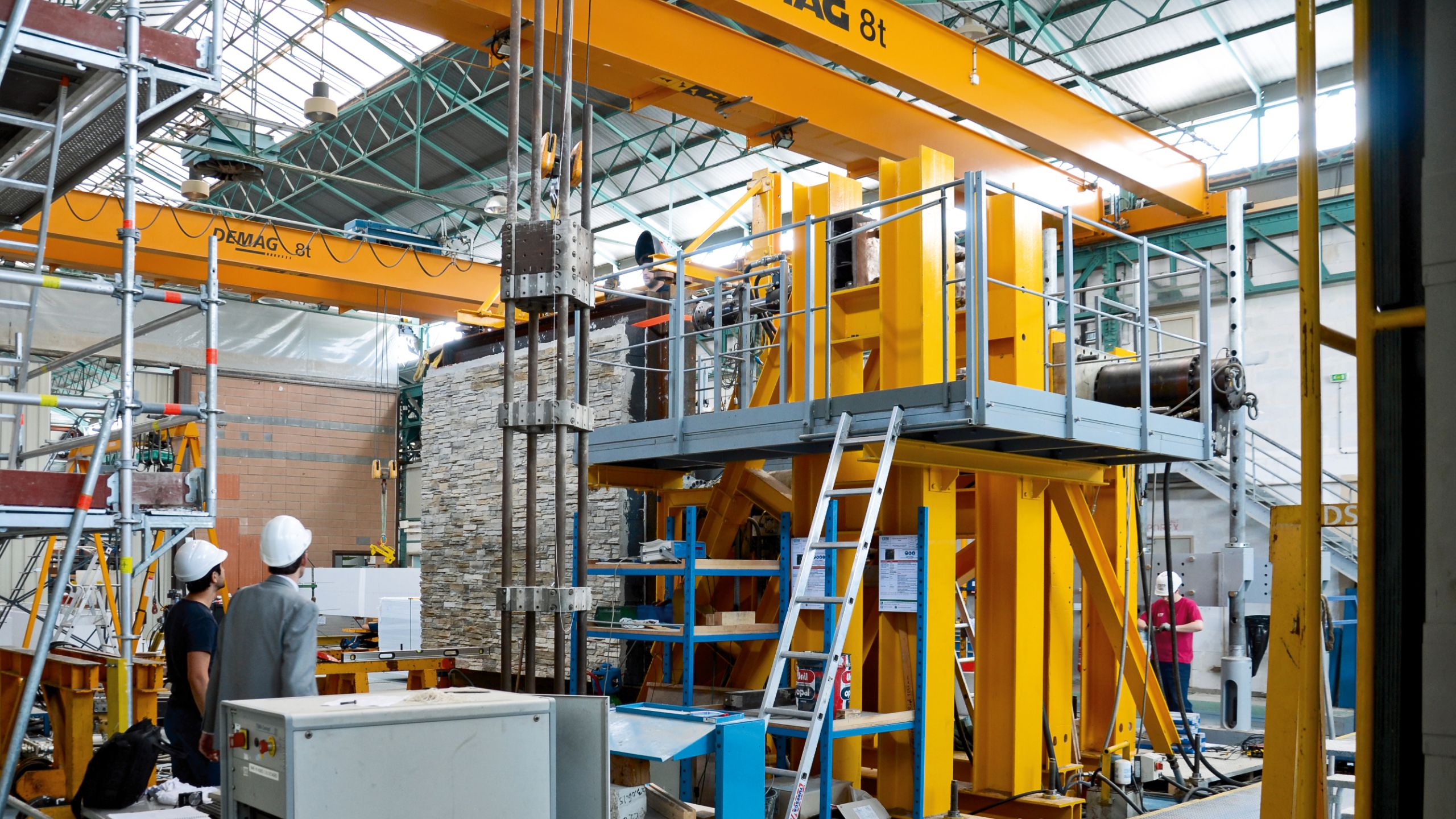
FIRE AND SMOKE CLASS
UNI EN 13823

2016 | France | CSTB Test SBI (Single Burning Item) /
Determining material’s fire and smoke classes. EN 1382
Herewith we report soma data regarding the fire test made on wall covering Murogeopietra® installed on 160 mm external thermal EPS insulation; this test confirms murogeopietra as a not flammable material and attests a complete lack of toxic smoke development.
This means that Murogeopietra® protects the underlying insulation against heat, so that sublimation is avoided during the time necessary for evacuation.
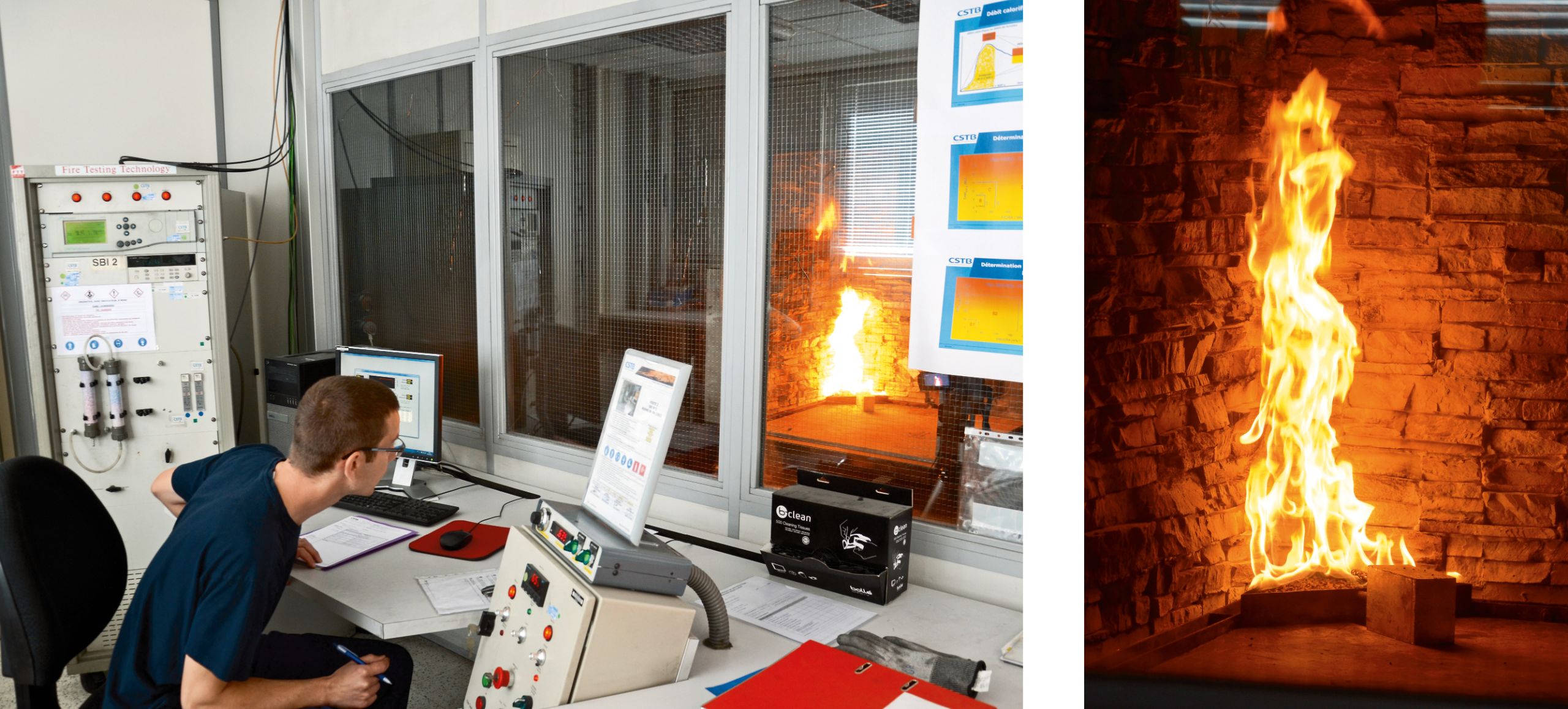
MANY LABORATORY TESTS
CLIMATIC CHAMBER

2014 | Italy | ACCELERATED AGEING on exterior thermal insulation.
We were greatly concerned about the possible presence of water in the structure due to external weathering or the passage of vapour and its disposal. A test performed at Milan Polytechnic confirmed the validity of the system and the corrections made to the ingredients used.
At the same time, we tested the same insulation cladding coated with cut natural stone, and we found that it was impossible to use it, just as we had supposed. The non-modifiable technical values, such as permeability to vapour and weight, significantly affect the efficiency of insulation.
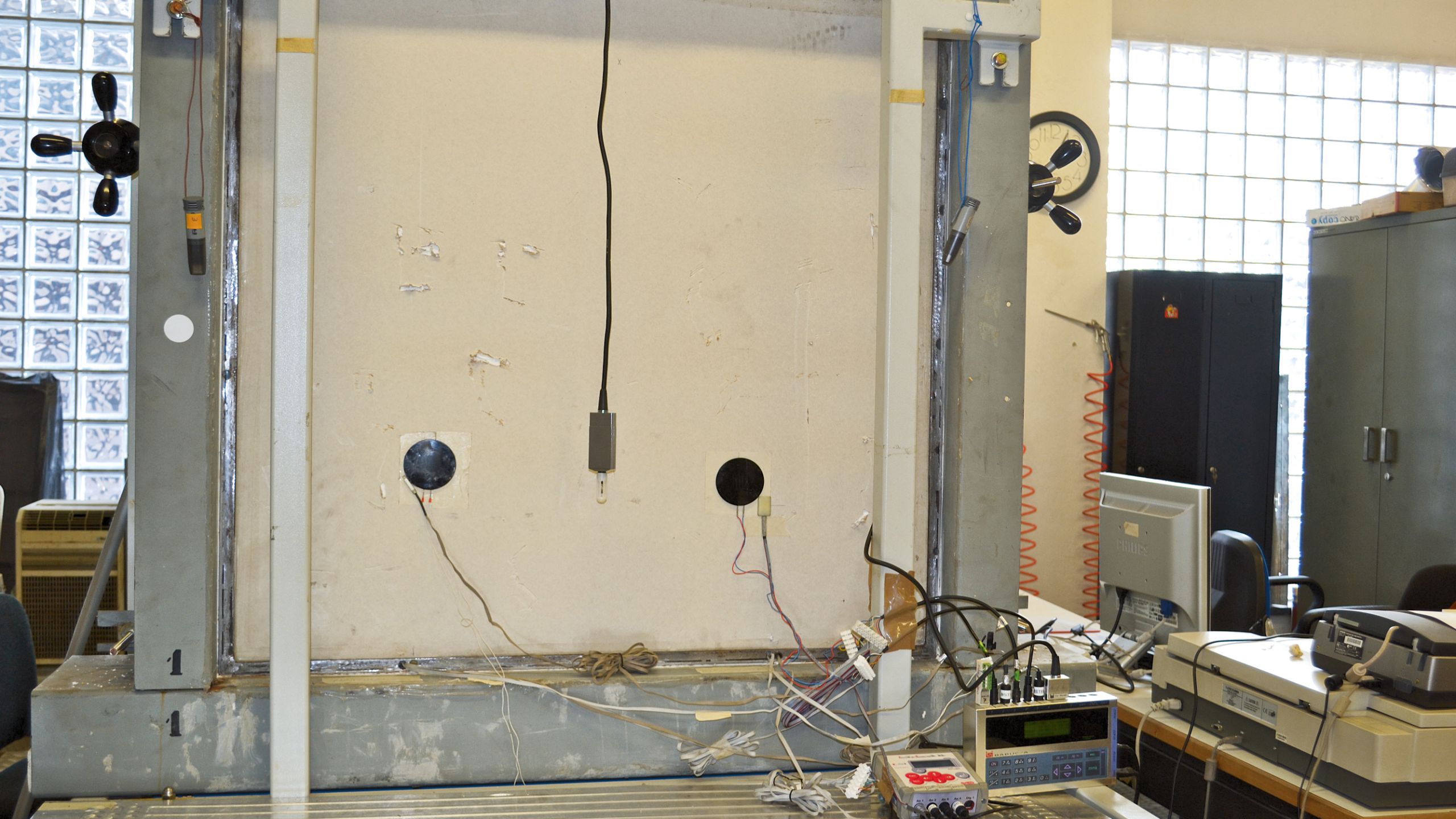
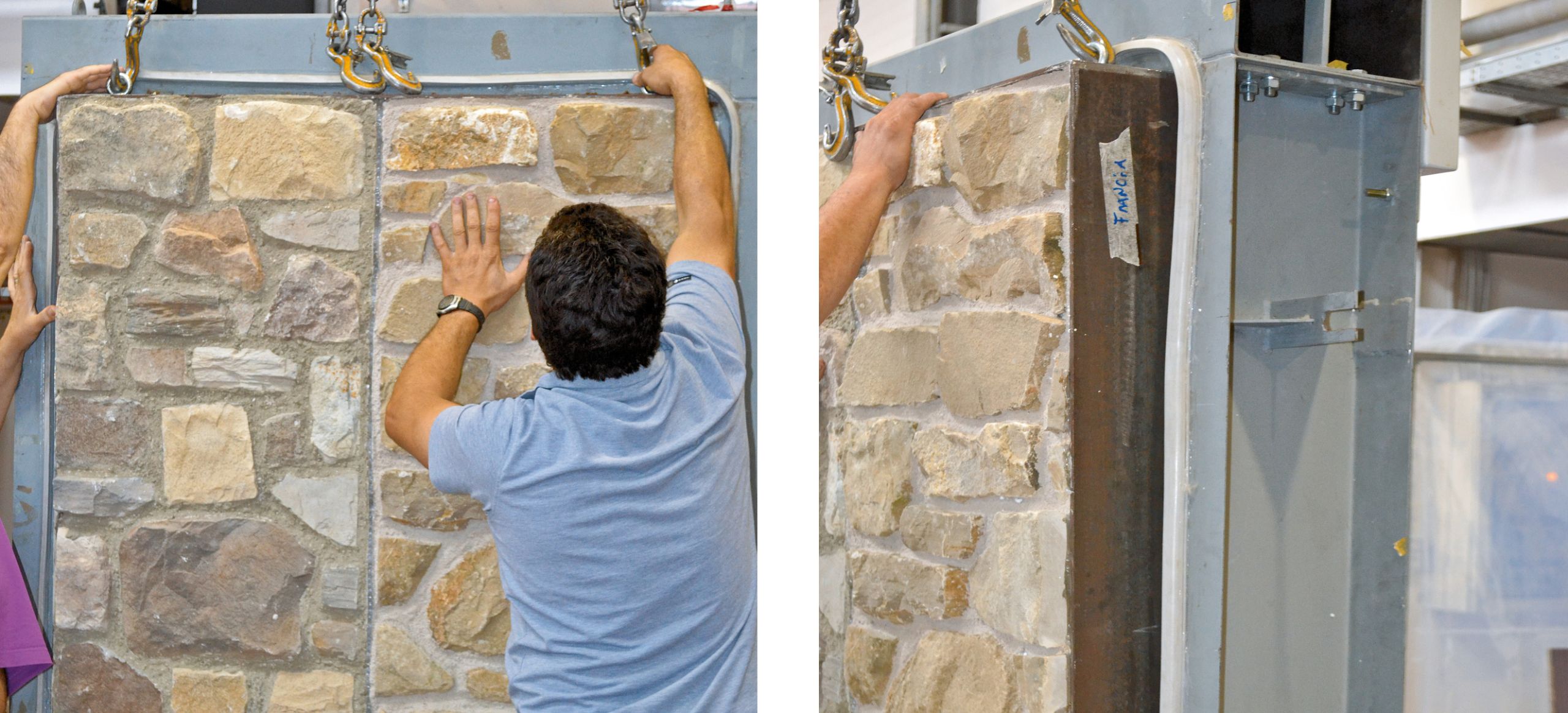
FIRE TEST
2010 | Austria | FIRE TEST
IBS Institut für Brandschutztechnik und Sicherheitsforschung GmbH
Great importance was given to safety at the design stage. In Europe there are specific regulations governing escape routes in case of fire. In the case in point, our Murogeopietra® cladding system coupled with the EPS insulation coating, which is notoriously sensitive to fire, was not supposed to collapse and obstruct the escape routes during evacuation of the building, which was established in 30 minutes under the action of a flame hitting the escape route directly at 900 C°.
The test was successful and the insulation (on the whole height of 6 metres) did not collapse at all thanks to the stone veneer’s high thermal inertia, which protected it for the entire time required.
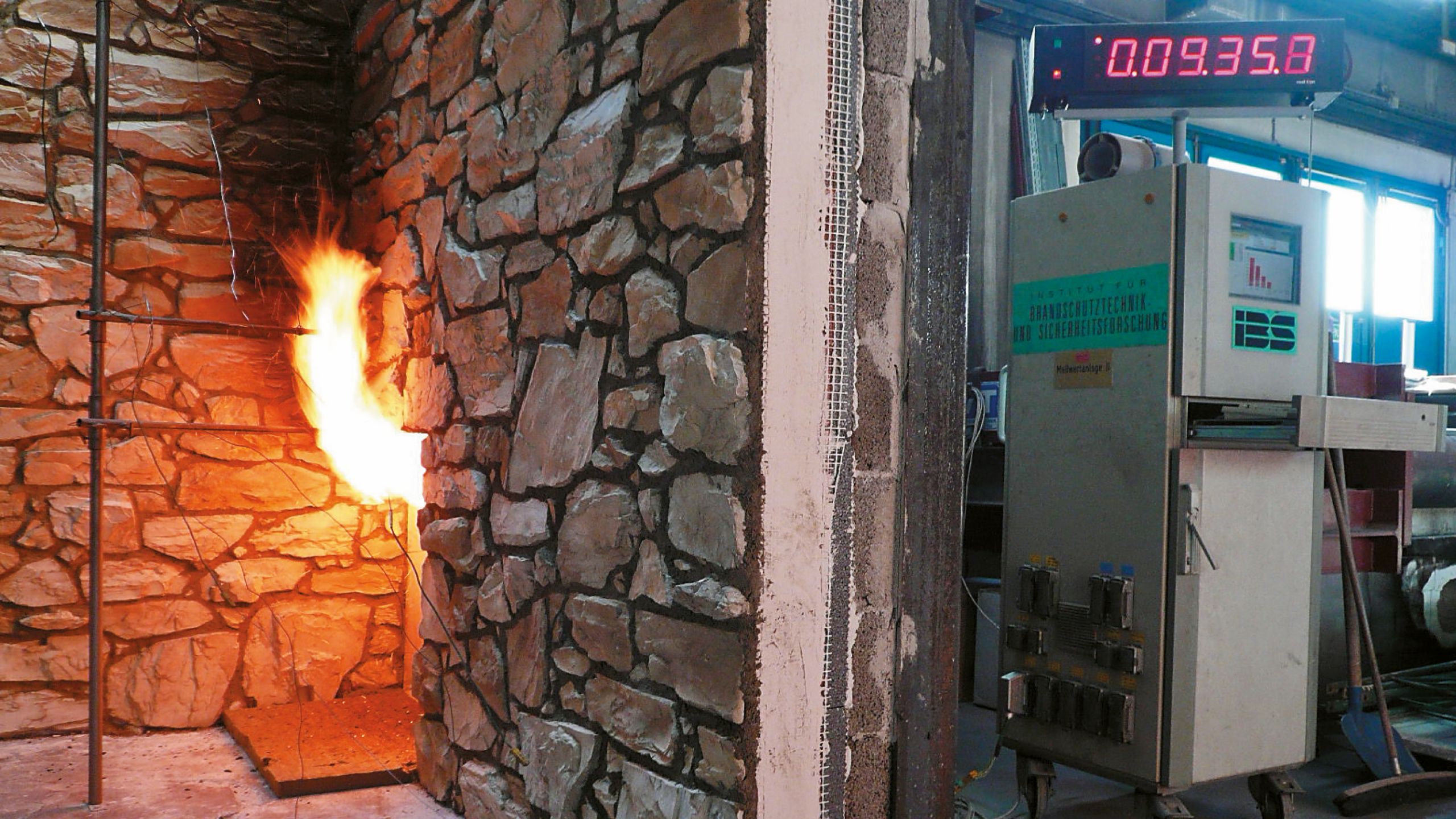
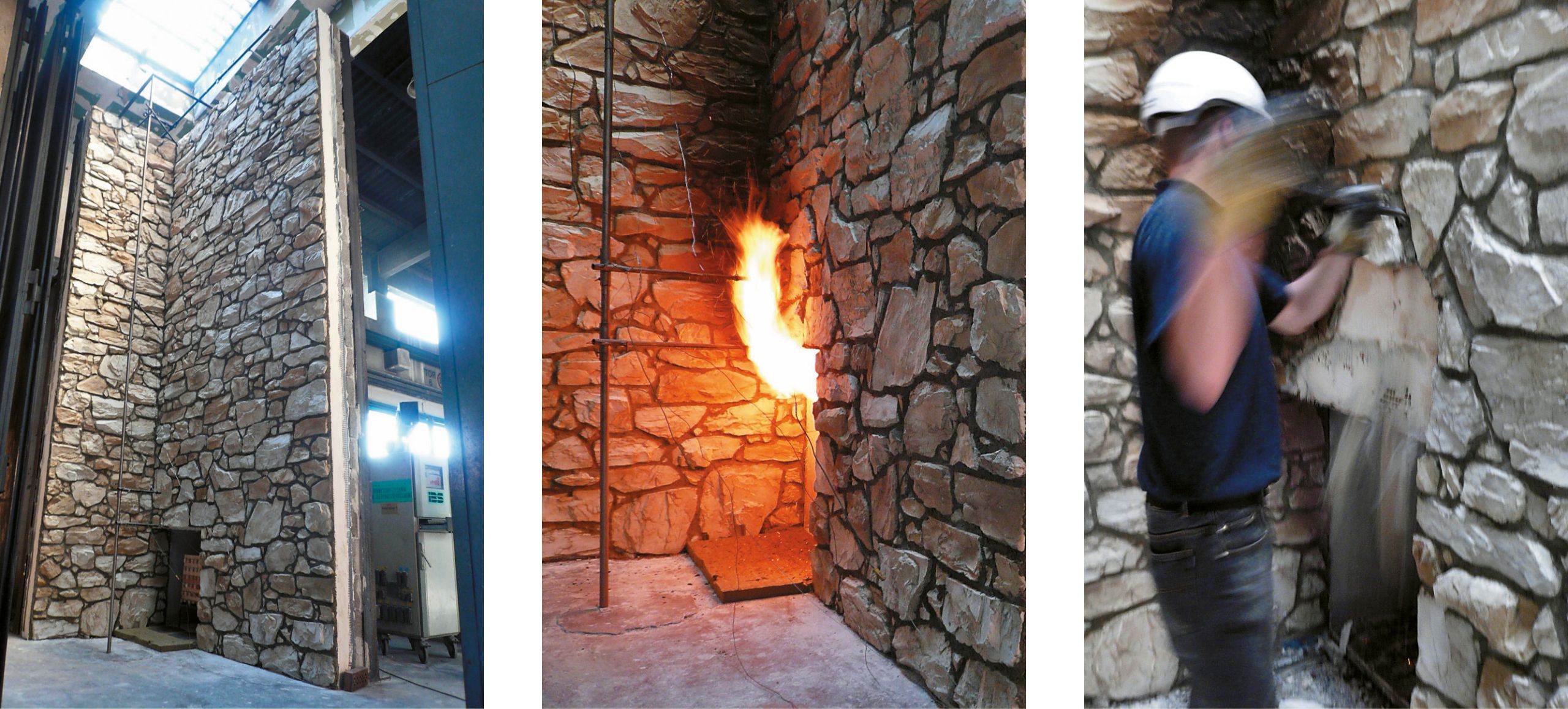
ALSO OF POTENTIAL INTEREST
The strength of manufactured stone veneer in modern construction lies in energy savings, eco-sustainability and the wellbeing of building occupants.
Efficient solutions with high aesthetic appeal express the charm of stone in different architectural styles and construction types, like a natural stone wall, but without all its issues.

